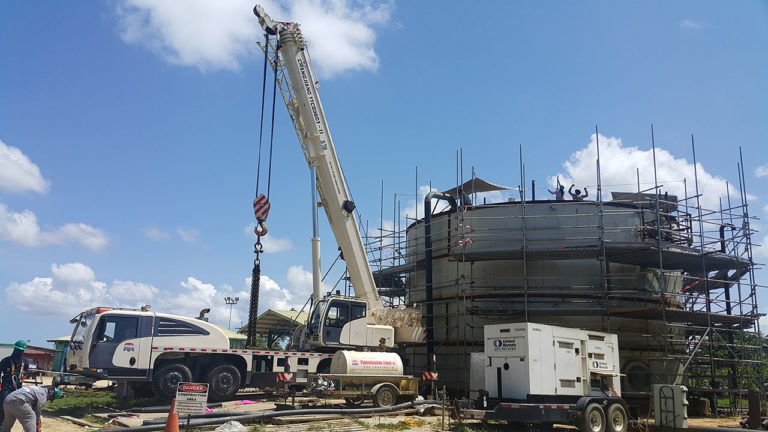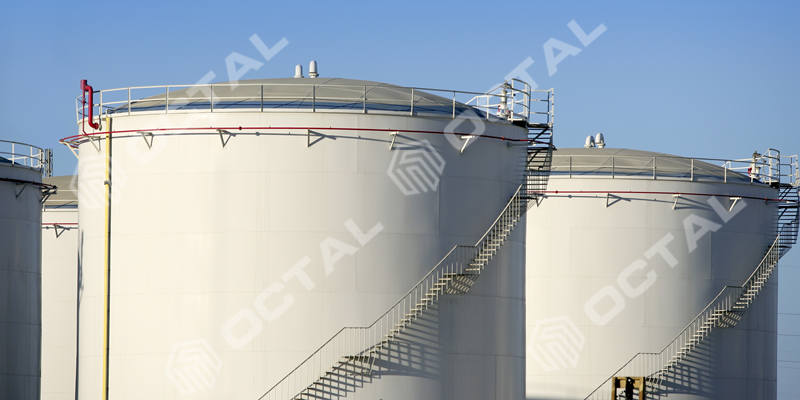Implementing the Main Steps Behind API 650 Welding Inspection Protocols
Wiki Article
How Welding Examination Works: A Comprehensive Overview for Professionals
Welding evaluation plays an important role in making sure the safety and reliability of welded frameworks. It involves a methodical method that consists of both visual inspection and advanced testing methods. Experts need to familiarize themselves with key criteria and regulations governing the sector. Understanding the usual issues that can arise throughout welding is necessary. This guide will certainly check out these aspects carefully, giving insights right into the procedures that promote high quality and honesty in welding.Comprehending the Relevance of Welding Examination
While lots of might undervalue the importance of welding examination, it plays a crucial duty in making certain the honesty and safety and security of welded frameworks. Reliable welding inspection identifies prospective problems and imperfections that can jeopardize architectural strength and bring about devastating failures. The examination process includes various strategies, such as aesthetic assessments, ultrasonic screening, and radiographic assessments, each adding to the total analysis of weld top quality.
Along with guarding the structural honesty, welding inspection guarantees compliance with sector requirements and client specs. By making certain that welds fulfill required resistances and qualities, assessments assist keep the reliability and durability of elements in various applications, from building to aerospace. A strenuous assessment process promotes a society of high quality and accountability amongst manufacturers and welders. Ultimately, welding inspection is not merely a step-by-step action; it is a critical technique that underpins the safety and efficiency of engineered systems across diverse sectors.
Key Standards and Laws in Welding Examination
The structure of efficient welding assessment hinges on adherence to established standards and policies. Various companies, such as the American Welding Society (AWS) and the American National Specification Institute (ANSI), stated standards that guarantee top quality and safety in welding practices. Secret requirements, such as AWS D1.1 for architectural welding and ASME Section IX for pressure vessels, give complete criteria for welding inspections, qualifications, and treatments. Regulative structures, consisting of those from the Occupational Security and Wellness Management (OSHA), required security techniques and employee defenses in welding settings. Conformity with these standards is important for accomplishing consistent weld high quality and lessening the danger of failings. Furthermore, worldwide requirements like ISO 3834 additionally improve international consistency in welding examination practices. Professionals must stay informed concerning these regulations to guarantee that their evaluation methods align with sector assumptions and lawful demands, thus protecting both workers and structural integrity.Initial Prep Work and Aesthetic Evaluation Techniques

Reliable welding assessment begins with an extensive pre-inspection checklist that ensures all required problems are fulfilled prior to the actual examination occurs. Following this preparation, visual issue identification plays an essential function in reviewing weld high quality, permitting examiners to find concerns such as fractures or inappropriate fusion. Together, these strategies form the foundation for an effective welding evaluation procedure.
Pre-Inspection Checklist
Before commencing any kind of welding assessment, a comprehensive pre-inspection list is vital to guarantee that all essential preparations are finished which visual assessment strategies are effectively utilized. Crucial element of this checklist include confirming the welding treatment requirements (WPS), making certain all devices is adjusted and in excellent functioning condition, and confirming that the inspector possesses the required qualifications. In addition, it is vital to examine any kind of previous assessment reports and to analyze the work atmosphere for safety threats. The inspector should also verify that all appropriate documents, such as material certifications and inspection records, is readily offered. Finishing this list assists to develop a strong structure for an effective examination procedure, improving the dependability of the results obtained.Aesthetic Flaw Identification
An effective aesthetic problem recognition process starts with careful first preparation and the application of recognized visual inspection strategies. Examiners ought to guarantee that the welding location is clean and well-lit, as sufficient presence is necessary for finding issues. A comprehensive examination of the weld joint's surface area allows for the identification of discontinuities, such as splits, undercuts, or porosity. Inspectors typically utilize tools like multiplying glasses or mirrors to enhance their sight of hard-to-reach areas. Furthermore, they must recognize with the details welding standards and standards pertinent to the project. By sticking to these approaches, examiners can successfully identify prospective concerns, securing the integrity of the weld and compliance with industry standards.Non-Destructive Screening Approaches: A Summary
Non-destructive testing (NDT) techniques play an essential function in the welding examination process by ensuring the stability and integrity of bonded frameworks without causing any type of damage (API 650 Welding Inspection). These methods enable assessors to examine the high quality of welds while protecting the parts being analyzed. Typical NDT approaches consist of ultrasonic screening, More Info radiographic testing, magnetic fragment testing, and dye penetrant testing, each offering special advantagesUltrasonic screening uses high-frequency acoustic waves to detect inner flaws, while radiographic testing uses X-rays or gamma rays to imagine the internal framework of welds. Magnetic bit testing exposes surface and near-surface problems by applying an electromagnetic field and iron bits to the weld area. Dye penetrant screening highlights surface-breaking problems with the application of a colored dye. Together, these NDT techniques offer important insights right into weld quality, allowing professionals to make informed choices regarding safety and security and compliance in welding applications.
Typical Problems and Their Implications
Recognizing typical problems in welded joints is essential for maintaining structural stability and safety and security. Different flaws can occur during the welding procedure, each lugging potential effects for the general efficiency of the framework. Porosity, characterized by tiny gas pockets within the weld, can damage the joint and compromise its load-bearing capacity. Splits may establish because of thermal stress or inappropriate air conditioning, resulting in potential failure under anxiety. Incomplete fusion takes place when the weld metal does not fully bond with the base material, leading to weak joints that may not hold up against desired lots. Undercutting, where the base steel is worn down, can additionally minimize the effective cross-section of the weld. Furthermore, extreme reinforcement can develop tension focus that could lead to failure. Acknowledging these problems quickly permits rehabilitative actions, ensuring the durability and integrity of welded structures in critical applications.Tools and Devices Made Use Of in Welding Examination
Effective welding examination relies upon a range of specialized devices and equipment to ensure the top quality and honesty of welded joints. Necessary tools include aesthetic assessment devices, such as magnifying borescopes and glasses, which enable examiners to very closely check out welds for surface area defects. Non-destructive testing (NDT) techniques, such as ultrasonic testing, radiographic screening, and magnetic particle testing, are essential for identifying interior imperfections without harming the product.Dimension devices, consisting of calipers and weld gauges, help establish and examine dimensions conformity with specifications. Furthermore, hardness testers examine the mechanical residential or commercial properties of welded joints. Individual protective equipment read here (PPE) is also vital, securing the security of examiners while operating in potentially harmful settings (API 650 Welding Inspection). Each device serves a particular purpose, collectively boosting the performance of welding assessment and contributing to the reliability of finished tasks
Frequently Asked Questions
What Qualifications Are Required to End Up Being a Welding Inspector?
To become a welding assessor, people usually need pertinent qualifications, such as AWS CWI or CSWIP, along with experience in welding processes, engineering concepts, and understanding of evaluation methods, safety standards, and relevant codes.Exactly How Typically Should Welding Inspections Be Conducted?
Welding inspections need to be performed consistently, ideally at numerous job stages, consisting of pre-weld, during-weld, and post-weld. Frequency might additionally rely on industry requirements, project specifications, and the complexity of the welds entailed.Can Welding Defects Be Repaired After Assessment?

Yes, welding flaws can often be repaired after examination. Depending on the extent and type of flaw, proper approaches such as revamping or extra welding may be utilized to recover architectural stability and safety and security compliance.
What Industries Require Regular Welding Assessments?

Various sectors, including building, manufacturing, aerospace, and automobile, need normal welding evaluations - API 650 Welding Inspection. These inspections guarantee adherence to safety criteria and quality assurance, reducing risks connected with architectural integrity and operational performance in bonded elements
Just how Do I Select a Welding Assessment Service?
To pick a welding examination solution, one must think about credentials, experience, certifications, and sector online reputation. Additionally, assessing client evaluations and guaranteeing the service meets pertinent criteria can help ensure quality inspections and reliable results.
While numerous may ignore the value of welding examination, it plays a crucial duty in making sure the integrity and security read review of welded structures. Secret criteria, such as AWS D1.1 for structural welding and ASME Section IX for stress vessels, offer detailed criteria for welding inspections, qualifications, and treatments. Effective welding examination begins with an extensive pre-inspection list that assures all necessary problems are met before the actual assessment takes location. Prior to commencing any welding evaluation, an extensive pre-inspection list is essential to guarantee that all necessary prep work are finished and that aesthetic examination techniques are successfully employed. Non-destructive testing (NDT) approaches play an important function in the welding assessment procedure by making sure the stability and reliability of welded structures without causing any damages.
Report this wiki page